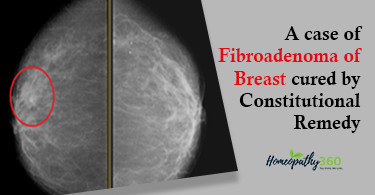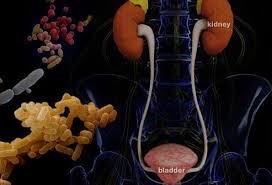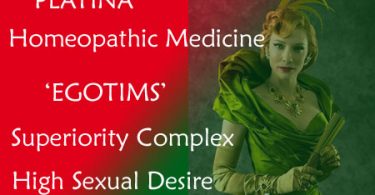 Introduction
Introduction
The prevalence of superficial mycotic infection worldwide is 20-25 % of which dermatophytes are the most common agents.
The burden of skin disease is multidimensional that encompasses psychological ,social and financial consequences of skin disease on the patient ,their families and on society. In modern society ,more and more people are attacked by a variety of diseases, in which skin diseases share significant proportion. Common skin diseases like fungal infections appear frequently. Skin is the mirror of internal health.
According to other systems of medicine Tinea corporis is a superficial fungal infection which is usually treated by external application which is merely suppressing the disease condition but the disease tends to recur often and becomes a chronic disease.
But in Homoeopathic system of medicine Tinea corporis is an external presentation of an internal disorder due to lowered vitality and immunity. Homoeopathy does not believe in treating any skin diseases by simply applying ointment or creams .As it is a system of medicine which works on inspiration of the humoral or the immune mechanism of the body from its latent or overt reaction, it is thereby the best form of medicine to treat skin diseases and is having a wider and better scope in giving a gentle and permanent result in Tinea corporis.
AETIOLOGY AND PATHOGENESIS
The three most common organisms are:
- Tricophyton rubrum
- Tricophyton mentagrophytes,
- Microsporum canis.
EPIDEMIOLOGY
- Tinea corporis may be transmitted directly from an infected human /animals via formite
- It may occur via auto-inoculation from reservoirs of dermatophyte colonization on the feet
- A humid climate are associated with more frequent and severe eruptions
- Wearing of occlusive clothing ,frequent skin to skin contact and minor traumas create an environment in which dermatophytes flourish
TYPES OF TINEA
| TYPES | COMMON NAMES | CAUSES | FEATHURES |
| Tinea pedis (foot) |
Athlete’s foot “ringworm of the foot”, tinea pedum,]and “moccasin foot” | moist communal areas barefoot inside of a shoe |
softening and breaking down of skin vesicles and bullae fluid-filled lesions |
Tinea unguium (nails)
|
Onychomycosis | the tropics and subtropics with a hot and humid climate |
nail becoming thickened and discoloured: white, black, yellow or green become brittle, with pieces breaking off or coming away from the toe or finger completely |
Tinea manuum (hand)
|
tinea manus | transmitted sexually |
Itching, burning, cracking, and scaling |
Tinea cruris (groin)
|
“crotch itch”, “crotch rot”, “Dhobie itch”, “eczema marginatum”,[2] “gym itch”, “jock itch”, “jock rot”, “scrot rot” and “ringworm of the groin |
Tight, restrictive clothing, such as jockstraps, traps heat and moisture, |
red, tan, or brown, with flaking, rippling, peeling or cracking skin |
Tinea corporis (body)
|
ringworm, tinea circinata, and tinea glabrosa | person-to-person transfer acquired while petting or grooming an animal |
enlarging raised red rings with a central area of clearing |
Tinea capitis (scalp)
|
“Ringworm of the scalp, “Scalp ringworm”, and “Tinea tonsurans | caused by dermatophytes in the Trichophyton and Microsporum genera that invade the hair shaft | |
Tinea faciei (face)
|
contagious just by touch | red rash on the face, followed by patches of small, raised bumps. The skin may peel | |
Tinea barbae (beard)
|
“Barber’s itch,” “Ringworm of the beard,” and “Tinea sycosis |
contact of an infected animal to the skin of a human. |
pimple or blister swelling and redness red and lumpy Crusting around hairs |
Tinea imbricata (overlapping pattern) |
Tokelau” and in parts of Indonesia as “Kaskado | itchy, and mainly in the torso and limbs | |
Tinea nigra (black) |
superficial phaeohyphomycosis,” and “Tinea nigra palmaris et plantaris | Hortaea werneckii. | dark brown to black painless patches |
Tinea versicolor (various colors) |
dermatomycosis furfuracea, pityriasis versicolor, and tinea flava |
Malasseziaglobosa | · ash-like scale · Pale, dark tan, or pink in color, with a reddish undertone Sharp border |
DIAGNOSIS
- Diagnosis usually is made clinically
- potassium hydroxide preparation(KOH)
INVESTIGATIONS
- Potassium hydroxide preparation
- Culture test
- Dermatophyte test medium
MANAGEMENT
General Management
- Affected area should be kept neat and clean and dry
- Avoid Sharing of towels or clothes as it is a medium for Spreading Towels ,sheets and clothes should be washed frequently
- Try not to scratch the rash as this may spread the fungus to other areas.
HOMOEOPATHIC MANAGEMENT
Homoeopathy is a system of medicine which is based on the law of similars. In Homoeopathy we are not treating the disease, but the patient as a whole.Tinea corporis is an external expression of an internal disorder the reason being lowered vitality and immunity .Homoeopathy does not believe in treating any skin disease by applying ointment or creams.
Dr Hahnemann explains about the same in the §189 where he mentions that any external manifestation will have an internal derangement. And §185 the importance of local maladies.
In §187 he tells us that any injury on external part which is devoid of injury will have an internal derangement. In §191 medicines are powerful internal medicines which immediately after its ingestion causes important changes in the general health of such patient and particularly in the affected external parts of the body and restoration of health of the entire body along with the disappearance of the external affection without the aid of any external remedy or ointment.
SOME RUBRICS FROM REPERTORIES
KENT’S REPERTORY
SKIN – ITCHING – night – CARB – S, SULPH.,URT-U, Graph, Sil
SKIN – ITCHING – burning – ARS, BRY,GRAPH,SULPH,Calc.ph,Bell
SKIN – ERUPTION – white – KALI – CHL, Ars , Graph
SKIN – ERUPTION – dry – PHOS, SEP,SIL
HOMOEOPATHIC THERAPEUTICS
| REMEDIES | SYMPTOMS |
| SILICEA | · Delicate,pale,waxy · Rose coloured blotches · Scars suddenly become painful · Aggrevastion from new moon,morning · Better by warm,humid weather |
| SEPIA | · Ringworm like eruptions every spring.Urticaria on going in open air · Better in warm room · Sweat on feet ,worse on toes. · Offensive odor of the skin · Itching is not relieved by scratching · Aggravates from moist weather Ameliorates from hot application |
| ARSENICUM ALBUM | · Skin is dry and rough covered with dry scales extending sometimes even to forehead ,face and ears . · Burning and itching eruptions · Parts painful after scratching · Falling off in patches |
| BACILLINUM | · Eczema, tubercular over entire body · Itching intense aggravates at night when undressing and from bathing · Immense quantities of white bran like scales · Oozing behind the ears ,in the hair , in folds of skin with rawness and soreness. Fiery red skin. Ringworm |
| SULPHUR | · Dry ,scaly and unhealthy · Every little injury suppurates · Itching and burning · Worse from scratching and washing · Skin affections after local medications · Purities especially from warmth and in the evening · Better from dry and warm weather |
Bibliography
- Kent JT. Repertory Of the Homoeopathic Materia Medica And a Word Index.Reprint Edition. New Delhi: B.Jain publishers (P) Ltd; p. 1311,1319,1327
- Boericke William. New manual of homoeopathy material medica with repertory 3rd revised and augmented edition based on 9th edition p,75,92
- Allen.HC. Keynotes Rearranged And Classified With Leading Remedies Of The Materia Medica Added With Other Leading Nosodes And Bowel Nosodes. 6th Edition. B.Jain Publishers.2011.-p,356,375,387
- Kainthola Anup,Gaur puneet. Et al, Prevalence Of Dermatophytoses In Rural Populatiions Of Garhwal Himalayan Region, Uttarakhand India;International Research Journal Of medical Sciences;Vol.2(8),9-12,August2014;ISSN2320-7353





